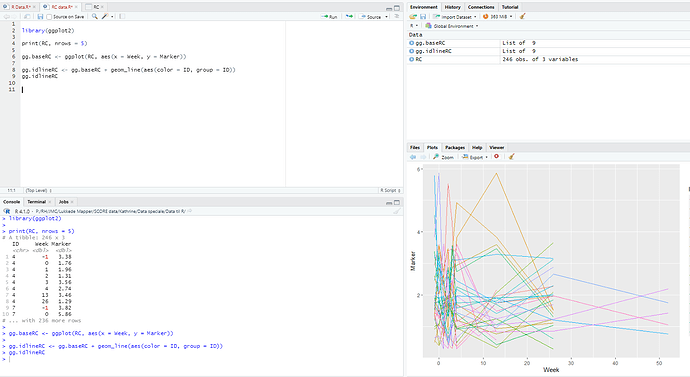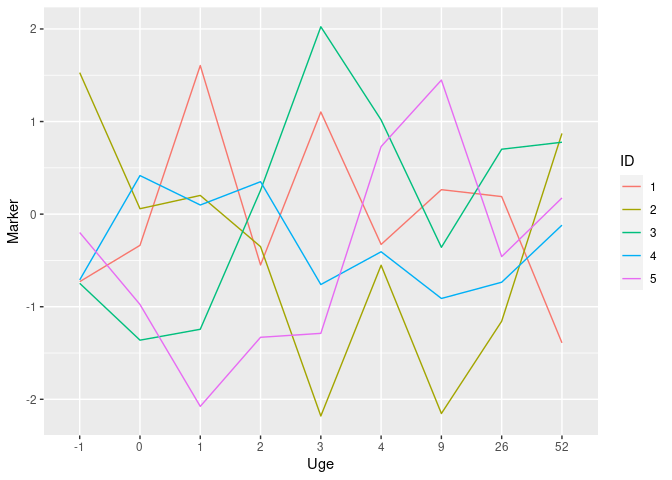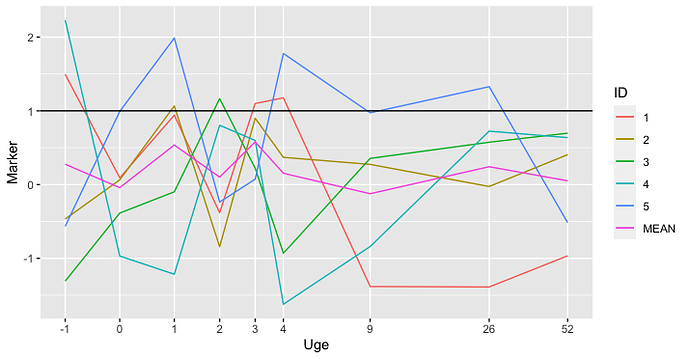Yes, thank you, this is exactly what I want!
However I cannot figure out excatly how to apply it in my own data. Sorry I'm quite new in R studio.
My R comes out with "there is no package with the name tidyverse" when i try to run that.
And I don't know what %>% means?
This is my data :
structure(list(ID = c(1L, 1L, 1L, 1L, 1L, 1L, 1L, 1L, 1L, 2L,
2L, 2L, 2L, 2L, 2L, 2L, 2L, 2L, 3L, 3L, 3L, 3L, 3L, 3L, 3L, 3L,
3L, 4L, 4L, 4L, 4L, 4L, 4L, 4L, 4L, 4L, 5L, 5L, 5L, 5L, 5L, 5L,
5L, 5L, 5L), Uge = c(-1, 0, 1, 2, 3, 4, 9, 26, 52, -1, 0, 1,
2, 3, 4, 9, 26, 52, -1, 0, 1, 2, 3, 4, 9, 26, 52, -1, 0, 1, 2,
3, 4, 9, 26, 52, -1, 0, 1, 2, 3, 4, 9, 26, 52), Marker = c(1.49317219635822,
0.0916611159641762, 0.941268823167784, -0.381807588400895, 1.09962751780779,
1.17596635205215, -1.38208894339733, -1.38888099157029, -0.966244942007395,
-0.466929046204789, 0.0640663352278284, 1.06611365130939, -0.844138650646416,
0.900307323227993, 0.369449030071903, 0.274034810149046, -0.0258490253601516,
0.405927991645641, -1.30927075097787, -0.386440400472932, -0.0981381494402249,
1.16579738644278, 0.222056225470917, -0.930999789253199, 0.355045225362826,
0.574226360704632, 0.697146373838426, 2.22858397709099, -0.968770695064989,
-1.21579333984626, 0.804869447819184, 0.598165314852854, -1.62324550653304,
-0.840086985535465, 0.724722172063413, 0.637094967990687, -0.565666372808534,
0.992345794114647, 1.98738245709519, -0.237507530574096, 0.0734188774509593,
1.77783312631777, 0.973549221953173, 1.32779192474376, -0.516324049268455
)), class = "data.frame", row.names = c(NA, -45L))



